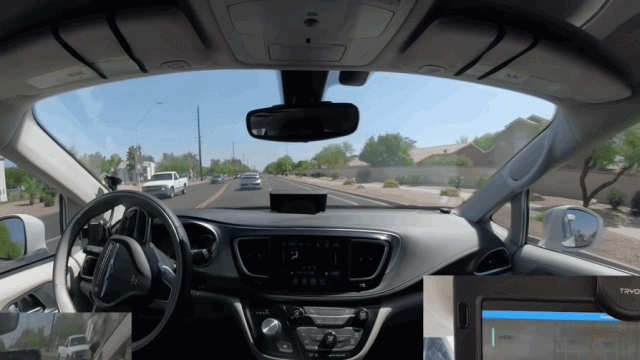Five years ago, we asked the question “What If Autonomous Cars Just Never Happen?” And sure, then we seemed like just naysayers of an exciting, paradigm-shifting disrupting industry, but here we are, and AVs don’t seem any closer to a reality.
Despite mega genius Elon Musk promising full self driving Teslas for the last nine years and big names like Google’s Waymo and GM’s Cruise constantly developing the technology, we are no closer to seeing self-driving cars on the market. There are barely any robo-taxis on the road.
What’s the deal? I thought this was the future, and yet we are still using our feet and hands to drive ourselves like a bunch of 20th Century jamokes. Bloomberg has some thoughts:
It all sounds great until you encounter an actual robo-taxi in the wild. Which is rare: Six years after companies started offering rides in what they’ve called autonomous cars and almost 20 years after the first self-driving demos, there are vanishingly few such vehicles on the road. And they tend to be confined to a handful of places in the Sun Belt, because they still can’t handle weather patterns trickier than Partly Cloudy. State-of-the-art robot cars also struggle with construction, animals, traffic cones, crossing guards, and what the industry calls “unprotected left turns,” which most of us would call “left turns.”
The industry says its Derek Zoolander problem applies only to lefts that require navigating oncoming traffic. (Great.) It’s devoted enormous resources to figuring out left turns, but the work continues. Earlier this year, Cruise LLC — majority-owned by General Motors Co. — recalled all of its self-driving vehicles after one car’s inability to turn left contributed to a crash in San Francisco that injured two people. Aaron McLear, a Cruise spokesman, says the recall “does not impact or change our current on-road operations.” Cruise is planning to expand to Austin and Phoenix this year. “We’ve moved the timeline to the left for what might be the first time in AV history,” McLear says.
Cruise didn’t release the video of that accident, but there’s an entire social media genre featuring self-driving cars that become hopelessly confused. When the results are less serious, they can be funny as hell. In one example, a Waymo car gets so flummoxed by a traffic cone that it drives away from the technician sent out to rescue it. In another, an entire fleet of modified Chevrolet Bolts show up at an intersection and simply stop, blocking traffic with a whiff of Maximum Overdrive. In a third, a Tesla drives, at very slow speed, straight into the tail of a private jet.
This, it seems, is the best the field can do after investors have bet something like $US100 ($159.39) billion, according to a McKinsey & Co. report. While the industry’s biggest names continue to project optimism, the emerging consensus is that the world of robo-taxis isn’t just around the next unprotected left — that we might have to wait decades longer, or an eternity.
That’s a whole lot of money for not a whole lot of self-driving vehicles. Bloomberg even spoke to Anthony Levandowski, the disgraced pioneer of the self-driving industry, about what a racket AVs have become:
“You’d be hard-pressed to find another industry that’s invested so many dollars in R&D and that has delivered so little,” Levandowski says in an interview. “Forget about profits — what’s the combined revenue of all the robo-taxi, robo-truck, robo-whatever companies? Is it a million dollars? Maybe. I think it’s more like zero.”
The few places that allow self-driving cars are mostly cities in the sunbelt with near daily perfect weather like Los Angeles, Phoenix and soon Las Vegas. But even on a sunny day in a well-practice area, AVs can still end up with multiple errors and mistakes on the part of the AV. It’s not hard to plenty of examples on YouTube of rides like this:
Bloomberg doesn’t suggest that self-driving cars will never happen, just that the dream is more distant than the hype would have had you believe. It’s not the only outlet to recently question the self-driving car story. The Guardian released a great video about why the tech stalled last month. What doesn’t help are media outlets like the New York Times and CNBC regularly misleading the public in stories on just how advanced the technology is and even the basics of how it works.
Someday, some form of computer controlled transit may be achieved. In the mean time, it’s still riddled with technical glitches, disturbing crashes, and over confident, under informed, early users. You can read the whole thing from Bloomberg here.
